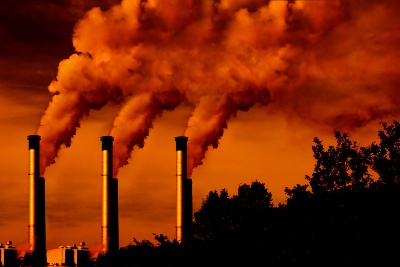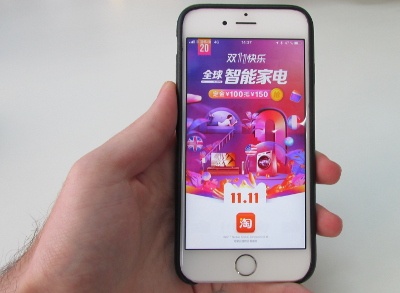Best in Manufacturing – November 19, 2017
Each Sunday, we publish a list of top articles and other content related to manufacturing in areas like quality control, product development, supply chain management, sourcing, auditing and law.
1. Climate change might wreck Chinese manufacturing
Global warming is a contentious issue. While most people believe it exists in America, for example, there are those that think of it as nothing more than a hoax. No matter your stance, there are researchers in the world that are assuming it’s real and are preparing for it by conducting studies to measure its effects.
 One such study examined how hotter weather affected half a million Chinese manufacturers from 1998 to 2007. The research provides some startling numbers:
One such study examined how hotter weather affected half a million Chinese manufacturers from 1998 to 2007. The research provides some startling numbers:
...an extra day of extreme heat, defined as exhibiting temperatures above 90 degrees Fahrenheit, leads to roughly half a percentage point drop in output, or nearly $10,000 for the average firm, in 2017 dollars.
And this is just for one day of extreme heat. Imagine if during the year, there are multiple days that impose difficult, sweltering working conditions on laborers. Moreover, imagine this effect compounded across entire industries – the overall loss of output quickly adds up.
The authors of the study note that the compound $47 billion USD loss of manufacturers’ output in China could lead businesses to raise prices. Not all industries are affected by a loss of output though. Coal and iron mining experienced minor increases in productivity. But they’re the exception, rather than the rule.
Interestingly, both labor-intensive and capital-intensive manufacturers suffered a loss of output from higher temperatures. Maybe robots sweat too?
Read this featured article on climate change and its effect on manufacturing to get a better idea about the findings of the survey conducted:
Climate Change Is Costly For Manufacturing, Study Says - Lydia O’Neal, International Business Times
2. America’s future in Asia: is there still one?
As part of the Obama administration’s “pivot to Asia”, negotiators worked on a deal called the “Trans-Pacific Partnership”, or TPP for short. The multi-lateral trade pact was meant to combat China’s influence and strengthen economic ties between the twelve original countries in the pact. When Trump took office, he removed the U.S. from the deal, leaving eleven nations remaining.
In addition to exiting the TPP in the first weeks of his presidency, Trump put forth his policy of “America First” in his inauguration speech. Regardless of this stance toward trade, the Asian countries Trump visited recently during his two-week tour of the continent treated him with grand ceremonial honors.
But these warm receptions don’t necessarily translate into trade concessions and better treatment for American enterprises.
This featured article reports the comments of a former deputy U.S. Trade Representative, Robert Holleyman. From the article:
What Holleyman said he kept hearing was a “consistent theme from other APEC [Asia-Pacific Economic Cooperation] economies that said, essentially, ‘Now that the U.S. has left Asia, we need to step forward and do this on our own.’”
The growing isolation of America in Asia is creating a void that China is trying to fill with bilateral agreements and initiatives like One Belt, One Road. Other Asian nations are also planning their economies’ strategies and futures without the presence America once had. And in the face of tough American rhetoric, Asian countries aren’t willing to bend over backwards to meet trade demands.
The article also reports that,
...many in Asia as well as America still see the U.S. as an economic superpower in the region, and they may have found some encouragement in the way Trump has toned down his trade rhetoric during his trip thus far.
For the moment, it seems like the U.S. still has a strong presence in Asia. But how will that presence look in the future considering the new American stance on global trade and the attempts of Asian countries to “fill the void”? Let us know in the comments section below!
To read more about Trump’s recent trip to Asia and its implications, check out the full article in the link below:
Trump's Asia Trip Shows U.S. at Risk of Being Sidelined in the Region's Economic Future - Done Lee, Los Angeles Times
3. Spot and minimize factory corruption with these tips
Corruption is a nasty aspect of business. Where two people (or a few more) personally benefit, entire other parts of your supply chain or company might suffer.
 In China, the notorious symbol for corruption is the 红包, or “hóngbāo”. It literally means “red envelope”. The envelope is given to children during the Chinese New Year holiday, during weddings, and on special occasions. Unfortunately, special occasions also include trying to bribe people and gain influence.
In China, the notorious symbol for corruption is the 红包, or “hóngbāo”. It literally means “red envelope”. The envelope is given to children during the Chinese New Year holiday, during weddings, and on special occasions. Unfortunately, special occasions also include trying to bribe people and gain influence.
But corruption isn’t always as obvious as a bright red packet.
This featured article mentions other ways that a manufacturing operation can suffer from not-so-savory business practices, such as:
- Asset misappropriation: stealing inventory, cash or having conflicts of interest
- Corruption: e.g. kickbacks, economic extortion and more
- Fraudulent statements: “making the numbers work” on paper. For example, counting a certain transaction as revenue to hit a revenue goal
Check out this featured article to learn what you can do to detect these problems and prevent them from entering your supply chain:
Minimizing and Identifying Frauds and Corruption in a Factory - Renaud Anjoran, Qualityinspection.org
4. Root out corruption and ramp up sustainability in your supply chain with databases
How much do you really know about your suppliers? Do they have a history of bribery, corruption or environmental issues? With advances in big data, the answers just might be out there – if you know where to look for them.
New software systems and third-party databases are changing the way supply chain professionals can identify potential risks and flag areas of improvement for their suppliers. These databases, like Dun and Bradstreet and EcoVadis, comb through a number of international sources to compile key vendor data and information with just a few clicks of a button. With the right data, you can catalog, audit and vet suppliers at a much more detailed level than ever before.
We can provide specific types of screening for adverse media and criminal allegations, to make sure the company you want to do business with has historically not been caught doing things that can harm your brand.
This featured article focuses on two supply chain concerns: sustainability and corruption. But the implications of big data for supply chain visibility are huge and keep growing. This sort of data can be invaluable during the onboarding process of selecting a new supplier or updating data on your current suppliers.
How can you talk to your suppliers and inspectors about corruption and bribery?
If you’re a large company with hundreds of suppliers, tracking down corruption at the highest levels with software might be your best bet. But all importers can, and should, hold their suppliers and inspection companies accountable to high integrity practices. Some of the many steps you can take include:
- Conduct an audit of your supplier to evaluate their certifications, business licenses, organization and working conditions
- Ask your third-party inspection company for documentation of their Code of Ethics
- Randomly audit your inspectors to ensure their integrity hasn’t been compromised
- Rotate inspectors from one inspection to the next to prevent close relationships from forming with factory staff
Check out the link below to learn more about how you can increase supply chain visibility with databases:
How Data Can Help Build a Sustainable Supply Chain – Deborah Abrams Kaplan, Supply Chain Dive
5. China’s eCommerce shopping spree supports thousands in villages
What is China’s version of Black Friday? Last week, China celebrated “Singles Day”, or “Double 11” (双十一 in Mandarin), aptly named for the day it falls on, November 11th. Singles Day was started by a few college students to celebrate their single-ness, as a sort of antithesis to holidays that celebrate couples, like Valentine’s Day.  But it has grown into a bona fide eCommerce shopping spree holiday with the help of Alibaba and its online marketplace, Taobao.
But it has grown into a bona fide eCommerce shopping spree holiday with the help of Alibaba and its online marketplace, Taobao.
As hundreds of millions of Chinese shoppers seized on promotional deals, factories in “Taobao Villages” were hard at work. Taobao villages, once remote and impoverished communities, have emerged as manufacturing bases for China’s eCommerce platforms. More than 1,300 such communities exist across China today, nearly double the number in 2015.
For one bunk bed manufacturer in China’s eastern Jiangsu province, Single’s Day makes up a whopping one-sixth of his annual orders.
It’s a new way for people here to make more money and get rich. It has really changed people’s fates. I’m driving a one-million-yuan car. I never dared to dream of such a day before.
As China’s middle class continues to grow, more and more factories will start to produce for Chinese consumers, rather than just make products for overseas retailers. For Taobao villages, this means more competition as more and more merchants try and jump on the Taobao bandwagon. And it could mean more competition for overseas eCommerce sellers too, as Alibaba has its sights set on global expansion.
Is Singles Day coming towards you? Learn more about the eCommerce phenomenon shaping China’s manufacturing villages in the link below:
Singles Day: China Prepares for 2017 Shopping Orgy – Albee Zhang, news.com.au
We’re constantly scanning the web for top manufacturing stories and news. If you’d like to submit an article for consideration for our weekly Best in Manufacturing, send us a message and let us know.







